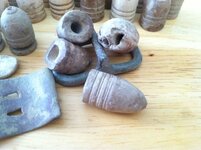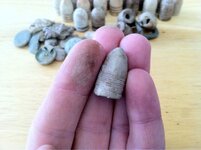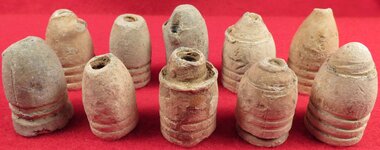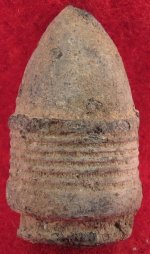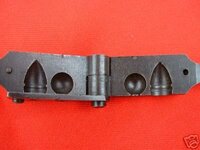DirtyMike
Hero Member
- Feb 10, 2009
- 898
- 105
- 🥇 Banner finds
- 1
- Detector(s) used
- Teknetics T2, MXT, TDI, Tejon, AT Pro
- Primary Interest:
- All Treasure Hunting
Not sure about this one. It's not a multi ring sharps. The extra rings appear to start and stop at the same spot. Pretty straight rings too. Just curious to see if anyone has seen one of these. I wonder if it was a machine or casting flaw? Or was it carved. Or is this just a variant I have not came across yet?


